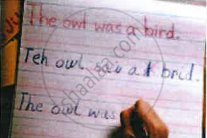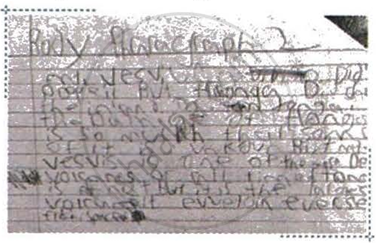Advertisements
Advertisements
Questions
Describe the main learning disabilities in brief.
Early intervention during learning disability helps in better progress. With respect to this explain any two signs a child manifests in middle childhood which show that he could be having a learning disability.
Solution
- Dyslexia (words or reading): Dyslexia is the most common form of all learning disabilities. It is a language-based disability in which a person has trouble understanding words, sentences, or paragraphs. People with dyslexia often have problems with processing or understanding what they read or hear. Many dyslexic people are notably talented in arts and music, 3-D visual perception, and athletic and mechanical ability. Dyslexia may also be referred to as a reading· disability or reading disorder. Some people struggle with phonemic awareness, which means they fail to recognise the way words break down according to sound. Students cannot distinguish between same sounding words. Other issues relate to fluency, spelling, comprehension, and more.
- Dysgraphia (graphics): Dysgraphia is related to the physical act of writing. It is a writing disability where people find it hard to form letters and write within a defined space. Many people with dysgraphia have handwriting that is uneven and inconsistent. Many are able to write legibly but do so very slowly or in very small fonts. Typically, people with dysgraphia cannot visualise letters and do not possess the ability to remember the motor patterns of letters. They require an extensive amount of energy and time to write. These students often cannot hold a pencil correctly, and their posture may be tense while trying to write. This leads them to tire easily, causing discouragement that further inhibits progress. These students have trouble organising their thoughts coherently. Their writing may be redundant or have obvious omissions that affect the quality and readability of the text. They may also struggle with basic sentence structure and grammatical awareness.
- Dyscalculia (calculations, maths): Dyscalculia is a learning disability that affects the ability to grasp and solve· math concepts. There are many types of math disabilities, and these can affect people differently at different stages of life. People with dyscalculia often have difficulty manipulating numbers in their heads and remembering steps in formulas and equations. They mainly have a difficult time ·solving arithmetic problems. But just like dyslexia, people with dyscalculia can also be taught to achieve success. Dyscalculia can range from an inability to order numbers correctly and extend to limited strategies for problem-solving. They may also have difficulty with concepts like time, measurement, or estimation.
- ADHD: ADHD, or Attention Deficit Hyperactivity Disorder, is a disorder that causes children to lose focus on tasks very easily. They have difficulty paying attention and staying on a task. ADHD is distinguished by the child's excessive amount of activity. This may include constant fidgeting, nonstop talking, moving around, problems with doing quiet activities, trouble controlling their temper, and more. Inattentive ADHD causes people to not put the needed attention into the required task. People with inattentive ADHD may struggle with paying attention to instructions, daydream a lot, process information slowly, become bored easily, and be very poorly organised. ADHD is not a learning disability but can cause people to struggle with learning and is commonly linked to other learning disabilities. These students can be easily distracted and often have difficulty in traditional school settings. Unlike typical learning disabilities, which need instructional interventions, ADHD can be successfully treated with medications and behavioural therapies.
Notes
Students can refer to the provided solutions based on their preferred marks.
RELATED QUESTIONS
______ is a disorder that causes children to lose focus on a task very easily.
List any two characteristics seen in a dyslexic child.
Name any two types of learning disabilities among children.
Based on the essay, identify the specific learning disability the child might be experiencing?

Learning disorder is a ______ condition that affects the brain's ability to send, receive, and process information.
Identify the picture
 |
Identify the learning disability with this picture
Why is 'learning disability' referred to as a 'hidden disability'?
What are some characteristics seen in a child with A.D.H.D.?
What are auditory learning disabilities?
Explain in detail how 'Dyslexia' differs from 'Dysgraphia'.
